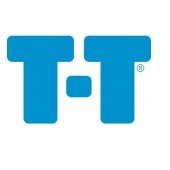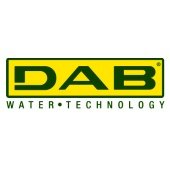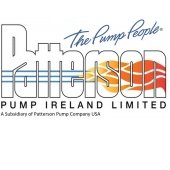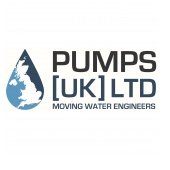Identifying poor assets and inefficient pumps

Despite soaring prices brought on by an energy crisis that shows no signs of diminishing, ask pump and blower operators about the efficiency of their equipment, and the truth is that most don’t know – according to the monitoring technology provider, Riventa.
Pumps might often be described as ‘working fine’ and ‘doing their job’, but is that, now more than ever, a strategy? How about saving money now and in the future?
“The opportunity to truly maintain, protect and optimise assets is here and now, with a Return on Investment (ROI) that is shorter than ever”, said Julian Lowe from Riventa. “The cost of solving asset management challenges is on a much smaller scale than most companies imagine”.
So, how can you make hidden costs more visible?
At a minimum, put some testing in place. By obtaining accurate, quality data, this first proactive step will give you a snapshot of performance, health, and efficiency. Even this entry-level testing will help identify poor assets and inefficient pumps.
Julian added: “All we hear about at the moment, understandably, is the massive hike in energy prices, so best test your pumps (and blowers and turbines) to reduce energy consumption and maximise savings. This will almost immediately help identify actions to improve performance. In addition to pump efficiency, measuring key parameters such as flow rate, head and electrical power, current pump performance characteristics can be compared to ‘as new’ and ‘post-refurbishment’ conditions. This provides the same accuracy as a pump manufacturer’s test facility – but with the distinct advantage of real operating conditions”. Across numerous industries, where for some, running pumps until destruction is the modus operandi, Julian has a point. He claims that the ROI can be as little as 18 months for larger pumps, blowers and turbines.
Optimisation
A level up from pump testing is to look at an Optimisation Service, utilising secure on-site pump monitoring equipment to provide real-time data. This enables users to start seeing what’s happening across a system by capturing data over 14 days or longer. This doesn’t have to involve tons of ‘spaghetti’; systems can now be cable-free and up and running in around one hour per pump – at low risk and with minimal disruption to existing operations.
Dr Tom Clifford from Riventa explained: “Once in place, real-time data for each asset can be evaluated, with information-driven insights highlighting performance issues and supporting decisions. This can establish best practice recommendations, realistic payback calculations and a business case for moving forward – all backed by precision measurement and innovative analytics”. Riventa has recently worked with a food manufacturer in testing the company’s cooling system, which is split into two pumping subsystems. Five factory pumps send chilled water from heat exchangers to the factory, and evaporator pumps send chilled water from the factory to refrigeration heat exchangers.
“To test the pumps, we used the thermodynamic measurement technique (with our specialist software) to measure suction and discharge pressures on either side of the pump, differential temperature, and motor input power,” explained Tom. “These measurements enabled us to calculate differential head across the pump, hydraulic efficiency and volumetric flow. The pumps were altered gradually. After each change, a test point was taken while allowing enough time to obtain the best statistical average. Tests also involved a routine of testing performance at an incumbent set point, followed by throttling the pump to reduce its flow rate. The latter action allowed other pumps running in parallel to increase in speed to compensate, with a final test point taken at that moment.” Tom continued: “Throttling meant we could observe the maximum possible flow through each pump under test without altering the overall flow to the plant. At times this was challenging because conditions downstream in production would change, altering the cooling load and, in turn, the flow set point. Nevertheless, good quality performance information was obtained.
“We found that all pumps were showing signs of wear. Moreover, manufacturer performance levels were not being achieved. None of the pumps we tested reached the manufacturer’s best efficiency point (BEP) (81%). In fact, the maximum pump efficiency possible was found to be 75% (achieved by pumps one and two only). Our findings enabled us to put pumps into a descending order of repair: one to five. While pumps one to three achieved a good relationship between power and flow, pumps four and five did not perform at lower flows. This indicated a high likelihood of internal recirculation – from high to low pressure parts of the impeller – being caused by high wear. We built a strong case for robust savings through the pump refurbishment. Broadly, two options were made available. The first was a basic refurbishment which involved applying an internal coating and replacing wear rings, bearings and seals. The second, more comprehensive refurbishment included the elements in the basic refurbishment, plus a new tailored impeller.
“We calculated that pump refurbishment would bring potential savings of £19,200 per year, with possibilities to refurbish two, three or five pumps”. This is just one example of what Riventa says it is helping companies achieve across a range of industries that include water, power, mining and petrochemical.
Advanced pump monitoring and optimisation are available too, continuously focusing efforts by evaluating and understanding performance gains across priority pumps and sites. And for some organisations, full optimisation of networks is available.
Changing mindsets
“Nobody wanted an energy crisis,” concluded Tom, “but as prices soar, we are beginning to see a change in mindset about just how important it is to know how your assets, such as pumps, blowers and turbines, are really performing. Initially, some basic testing might reveal some not altogether pleasing facts, but you can soon put yourself on a positive course to make some excellent, ongoing savings”. chevron-circle-right
www.riventa.com
Back to Latest News
3.png&w=170&h=170)


2.jpg&w=170&h=170)




1.png&w=170&h=170)


